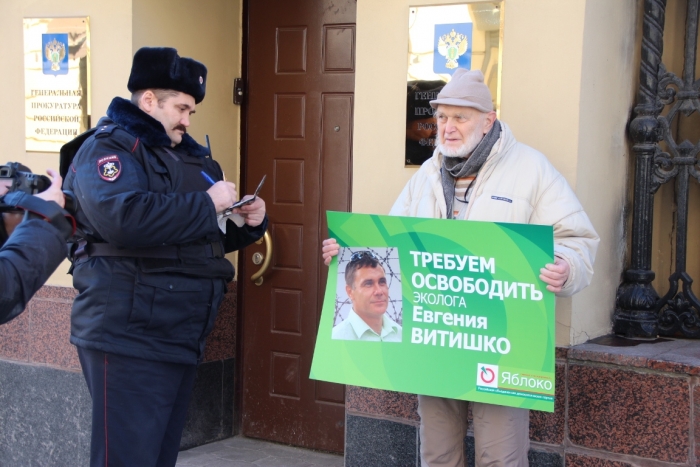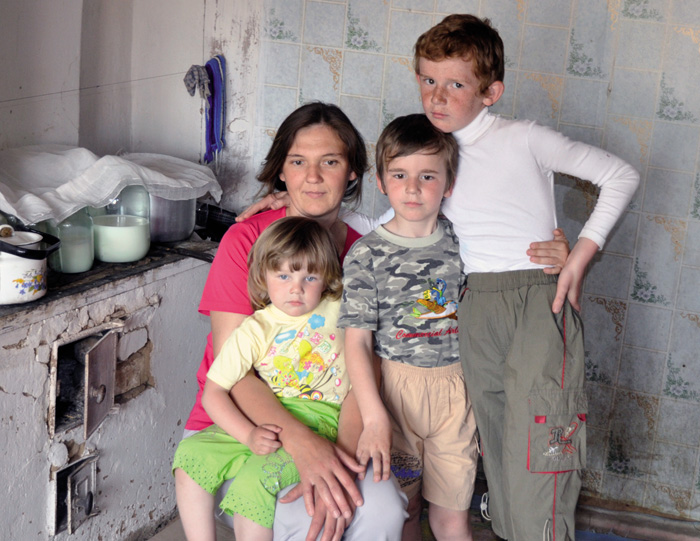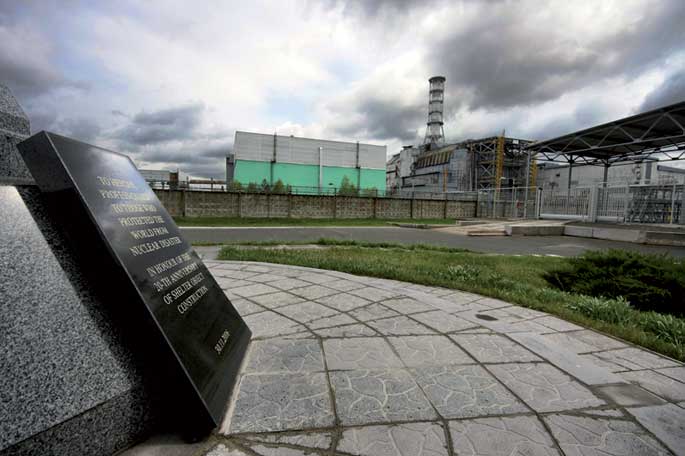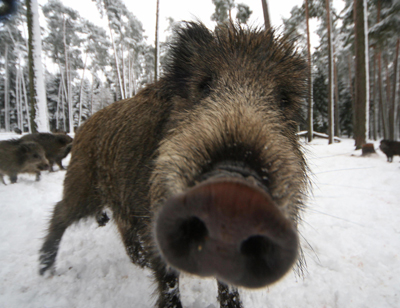Alexei Yablokov dies, a wise man who raised Chernobyl's covered truth
- The patriarch of modern Russian environmentalism died in Moscow on 10 January this year. The Chernobyl nuclear disaster showed the effects it will have for a long time on the health of people in Europe, aggravating the partial analyses offered by the authorities and the atomic lobby. In the Arctic Sea, the Soviet army unveiled the enormous pollution of submerged reactors and fuels. Until death has been annoying to the authorities.

Alexei Vladimirovich Yablokov died in Moscow on 10 January at the age of 83. In his last goodbye, the Nuclear Free Future association has called him “the green soul of Russia”. Oleg Bodrov, a colleague of friends and research, writes: “Like a Don Quixote of these days, he has fought for the Earth and the environment, without tibiity and until the end.” In our country, those who have read the chronicles of the never-ending Chernobyl disaster will perhaps remember its name, which we have already referred to on more than one occasion in these years. In the newspaper archive of the news you can also find the interview with Harald Neuber in 2011: “Nuclear power will end with another two or three Fukushima.” Remember in times when the atomic lapiko of Garoña is in the process of reactivation: it cannot be said that they do not warn us.
Born in 1933, a biologist of studies, he researched the academic activity in various areas: ecology, zoology, evolution, populations... With his prestige at the Russian Academy of Sciences, he was an advisor to Presidents Mikhail Gorbachov and Boris Jeltsin between 1989 and 1997. The Chernobyl nuclear power plant in eastern Ukraine had already exploded in 1986.
Yablokov resigned accusing him of leaning to the wishes of the new oligarchs and sacrificing on the altar of economic policy the values of democracy such as those of ecology. Later, when Vladimir Putin proclaimed the elimination of all environmental control established in Russia to free the way for business, the old scientist decided to deal with it in politics as well. In 2016, already very ill, he brought to light the latest monograph on the Chernobyl accident.
A classic in nuclear risk debates is the “Txernobyl: the damage caused by the disaster to humanity and nature”, published in 2007 by Yablokov along with the Belarussian Vassily and Alexey Nesterenko. A classic because they questioned the consensus that the atomic energy industry wanted to apply in the measurement of damage from accidents: “The myth of consensus is a great lie.”
Yablokov has denounced that the experts who are repeating the arguments of the IAEA in the International Atomic Energy Congress (IAEA) without dealing with the issue in its entirety, or are ignorant - if they are deemed to be generous - or utterly perverse. Children are getting sick because governments are unable to recognize that radioactivity, even in small doses, destroys life, causes malformations in bodies, canzers and other diseases.
“Millions of people on this planet – they say in the book available on the internet for free – the explosion of the fourth Chernobyl reactor has divided their life into two parts: the former and the later. (...) No person from any country can think that they are protected from radiation contamination. A nuclear reactor can infect half the planet. Chernobyl's influence covered the entire northern hemisphere. And the questions are still there. How many irradiated particles spread around the world? How many irradiations are there inside the sarcophagus that has been put into the plant? (...) More than three billion people live in areas contaminated by Chernobyl irradiation. It reached more than 50% of the extension of 13 European countries and more than 30% of that of eight others. Taking into account the laws of biology and statistics, damage will occur in these counties in many later generations.”
Pollution and health is political
The renowned British scientist Chris Busby, in collaboration with Yablokov, has called the recently deceased “Scientific giant of the post-Chernobyl”, because he was able to disseminate in English the rich scientific documentation produced by dissident experts from Russia about the accident, and because with his struggle he broke the cover that the nuclear lobby had placed.
The industries, and under their supervision the authorities, are prepared to accept parts of the radiation caused by a nuclear accident which, in the first days and hours, affects the bodies externally, at high doses. On the contrary, Busby, Yablokov and other scientists propose to take into account the radiation of lower doses and the particles that damage the body from the inside, although they can take years or generations until they become a disease, as they cause the greatest damage.
This alternative model of risk of irradiation hardly reaches the public’s ears, but it continues to explain the serious health problems that are seen in the affected areas of Russia, Ukraine and Belarus and that we should take into account throughout Europe.
In the greeting of his deceased colleague, Busby wrote that “we soon realized that the relationship between radiation pollution and health is fundamentally political and scientific in the background.” Anyone who wants to understand how industry and politics are trying to blur the knowledge of the atom in practice has on the Internet the documentary “Nuclear Controversies” (here with French subtitles) of 50 minutes produced by Swiss public television in 2004, which includes the conference organised in Kiev four years after the Chernobyl disaster. In it you can hear and see the arguments of both sides, including Yablokov himself, who want to minimize the effects of irritating pollution: “Through the dissemination of information that they cannot demonstrate with science, they want to save compensation to those affected.”
The great sin of Yablokov and his friends for the Russian establishment was, however, the public dissemination of news about atomic submarines and other nuclear waste left by the Soviet army in the Arctic Sea. In the Arctic Kara Sea, they are submerged in the vicinity of the island of Zembla Berria: 17,000 containers filled with radioactive waste, with 19 bapores of radioactive substances, 14 nuclear reactors of which five still have fuel, 735 heavy machines contaminated by radiation and, the most corrupt flower in the beam, the K-27 underwater atomic, with two nuclear reactors inside. The Soviet system, in its collapse, did not know what to do with this waste. Lack of money.
In revenge of the scandal, Alexander Nikitin was arrested by the authorities, who became an environmental and former military organization, for having discovered military secrets. Alexei Yablokov had to exercise his knowledge, diplomacy and reputation in the case he tried Nikitin for treason until he managed to leave innocent.
Errusiako armadak Txernobylgo zentral nuklearraren eremua kontrolpean du. Hala adierazi du ostiral goizean Errusiako Defentsa Ministroak.
Three Mile Island zentraleko istripu nuklearraren 38. urteurrena bete da, AEBetako historiako larriena, eta munduko hirugarrena. Zentralak ihes bat izan zuen eta substantzia erradioaktiboz betetako burbuila bat zabaldu zen zentraletik kanpo. Harrisburgen irakaspena, baina, ez... [+]
"Energia nuklearra deskonektatu" boikot kanpaina abiatu du Ekologistak Martxan taldeak Espainiako Estatuan, Txernobylgo istripua gertatu zenetik 30 urte pasa direnean.
24 erakundek (alderdi politikoak, sindikatuak, talde ekologistak...) eta bederatzi norbanakok Garoñako berriro irekitzearen aurkako manifestua aurkeztu dute Bilbon egindako ekitaldian. Adierazi dutenez, zentral nuklearra berriro martxan hasiko balitz Iberdrola eta... [+]
Apirilaren 26an 29 urte bete ziren Txernobyleko zentral nuklearra lehertu zenetik. Leherketaren ondorioz material erradioaktibo ugari barreiatu zen munduan zehar. Ukrainan bertan, erradioaktibitatea ez zen uniformeki barreiatu, gune batzuetan asko eta besteetan gutxi... [+]
Ukrainako zentral nuklearraren laugarren erreaktorearen sarkofagoari eusten zion eraikin bateko hormen eta sabaiaren zati bat puskatu egin dira, asteazkenean Pravda egunkariak argitaratu zuenez.
Txernobylgo zentral nuklearrak eztanda egin eta 26 urtera, 1.500 kilometro urrunago Alemaniako Bavarian basurdeek zesiuma metatzen dute beren okeletan. Hori dela eta, ehiztari bavariarrek basurde hilak analizatzera eraman behar izaten dituzte gobernuak baimendutako 70 kontrol... [+]
























